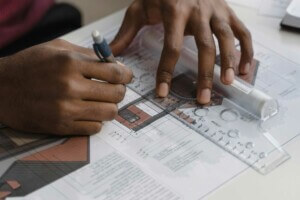It’s no secret that architecture has long-been thought of as a profession in which suffering is integral to the work itself. From unreasonable work hours to gender bias and poor pay, these deep-seated issues in the industry have gained more traction as of late with the fresh light shone on sexual harassment in the workplace.
This is not a new issue in architecture, but it has recently caused one group to think strategically about how to regulate behavior with legislative policy. In an annual meeting last week in Detroit, the National Council of Architectural Registration Boards (NCARB) approved an updated version of their “Model Rules of Conduct,” proposing new ethical standards for the practice and teaching of architecture. The rulebook is expected to serve as a starting point for U.S. licensing boards to navigate the complex world of workplace culture in 2018.
NCARB says it began looking closely into the topic three years ago when then-president Dennis S. Ward, FAIA, NCARB, set up an Ethics Task Force to investigate the ethical obligations between architects, NCARB, licensing boards, and collaborators from other professions. Their main concern was uncovering and setting up boundaries for the harassment issues facing the industry. The new Rules of Conduct document also outlines the obligation to report unethical behavior as well as the key role supervisors of NCARB’s Architectural Experience Program, a program required by most U.S. jurisdictions, have in objectively training future-licensed architects.
While these new rules are not a singular solution to tackling the discrimination and harassment problems happening within architecture, this is welcome news for an industry that is rooted in relationships. These guiding principles, which are thoroughly listed on page 7 of the unedited, updated document, help establish a baseline set of standards by which the profession can take a much-needed step towards a more equitable future.
The final, edited version of the “Model Rules of Conduct” will be online in the coming weeks, according to NCARB. You can view the current unedited document, which highlights the new language in red, here.











